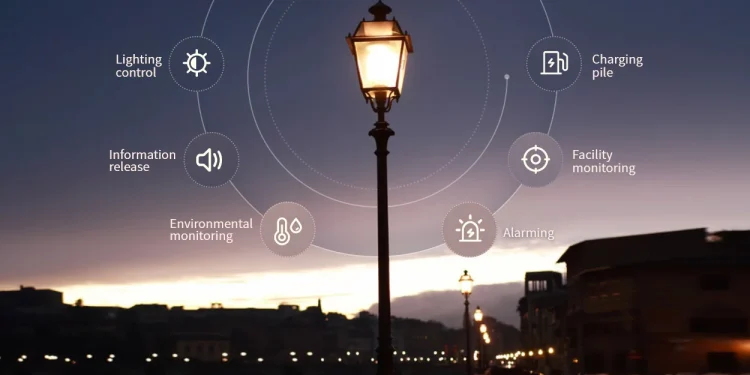In the realm of urban safety, few elements are as fundamental as adequate street lighting. Illuminated streets not only deter crime but also enhance pedestrian safety, promote community engagement, and foster a sense of security among residents. However, disparities in street light distribution persist, with underserved neighborhoods often bearing the brunt of inadequate lighting infrastructure. Addressing these disparities requires a nuanced approach that prioritizes equity in street light control deployment. This article explores the importance of equitable street lighting and strategies for achieving it in every neighborhood.
The Role of Street Lighting in Urban Safety:
Street lighting serves as a crucial component of urban infrastructure, offering various benefits beyond mere illumination. Well-lit streets contribute to crime prevention by reducing opportunities for illicit activities. Studies have consistently shown a correlation between improved street lighting and decreased crime rates, making it a cost-effective crime deterrent for municipalities. Additionally, adequate lighting enhances pedestrian safety by improving visibility and reducing the risk of accidents, particularly in areas with high foot traffic.
Moreover, illuminated streets promote community cohesion and encourage outdoor activities, fostering vibrant and inclusive public spaces. In economically disadvantaged neighborhoods, where residents often face disproportionate safety concerns, access to well-lit streets can significantly improve overall quality of life. However, achieving equitable distribution of street lighting remains a challenge for many cities worldwide.
Understanding Equity in Street Light Deployment:
Equity in street light deployment entails ensuring that all neighborhoods, regardless of socio-economic status or demographic makeup, have access to adequate lighting infrastructure. This requires a departure from traditional approaches that prioritize affluent areas or main thoroughfares over marginalized communities. Equity-driven policies recognize that every neighborhood deserves to feel safe and secure, irrespective of its zip code or income level.
The Need for Data-Driven Solutions:
To address disparities in street light deployment, cities must adopt data-driven approaches that prioritize areas with the greatest need. Geographic information systems (GIS) and spatial analysis can help identify neighborhoods lacking adequate lighting infrastructure and assess factors such as crime rates, pedestrian activity, and community feedback. By leveraging data analytics, city planners can develop targeted strategies for deploying street lights where they are most needed, thereby maximizing impact and promoting equity.
Community Engagement and Participatory Planning:
Equitable street lighting initiatives must prioritize community engagement and participatory planning processes. Residents are the ultimate beneficiaries of improved lighting infrastructure and often possess valuable insights into local safety concerns. Engaging community members in decision-making processes ensures that their voices are heard and that lighting solutions align with their needs and preferences.
Moreover, participatory planning fosters a sense of ownership and accountability among residents, leading to more sustainable outcomes. Collaborative efforts between local governments, community organizations, and residents can result in innovative solutions tailored to the unique challenges of each neighborhood. From co-designing lighting fixtures to identifying optimal placement locations, community engagement enriches the planning process and enhances the effectiveness of street light deployment initiatives.
Technological Innovations and Smart Lighting Solutions:
Advancements in technology offer promising avenues for enhancing the efficiency and effectiveness of street lighting systems. Smart lighting solutions, equipped with sensors and remote monitoring capabilities, allow for real-time adjustment of light levels based on environmental conditions and usage patterns. By optimizing energy consumption and reducing maintenance costs, smart lighting not only improves sustainability but also frees up resources for expanding lighting coverage in underserved areas.
Furthermore, data collected from smart lighting systems can inform evidence-based decision-making and facilitate proactive maintenance strategies. Predictive analytics and machine learning algorithms can identify potential issues before they escalate, ensuring uninterrupted service delivery and maximizing the lifespan of lighting infrastructure. Additionally, smart lighting platforms can integrate with other urban systems, such as public safety networks and transportation systems, to create interconnected ecosystems that enhance overall urban resilience and livability.
Case Studies in Equitable Street Light Deployment:
Several cities have already taken proactive steps to enhance equity in street light deployment, serving as inspiring examples for others to follow. For instance, the City of Los Angeles launched the “L.A. Lights the Way” initiative, which aims to upgrade and expand street lighting infrastructure in historically underserved neighborhoods. Through a combination of LED retrofits, smart lighting installations, and community outreach efforts, the initiative seeks to improve safety and quality of life for residents across the city.
Similarly, the City of Amsterdam has embraced innovative lighting solutions as part of its broader commitment to sustainability and inclusivity. By implementing dynamic lighting schemes that adjust to pedestrian and cyclist movements, Amsterdam ensures that public spaces remain safe and accessible for all users, regardless of the time of day or location. Moreover, the city actively engages residents in co-designing lighting interventions through workshops and interactive installations, fostering a sense of ownership and pride in local neighborhoods.
Challenges and Opportunities:
While progress has been made in advancing equity in street light deployment, significant challenges remain on the path toward universal access to safe and well-lit streets. Limited funding, bureaucratic hurdles, and competing priorities often hinder efforts to prioritize underserved communities. Moreover, concerns regarding data privacy and surveillance must be carefully addressed to ensure that smart lighting initiatives respect residents’ rights and autonomy.
However, these challenges also present opportunities for innovation and collaboration. Public-private partnerships can leverage resources and expertise from both sectors to accelerate the deployment of equitable lighting solutions. Furthermore, embracing a holistic approach that integrates street lighting with other urban planning goals, such as public health and environmental sustainability, can yield synergistic benefits and create more resilient and livable cities.
Conclusion:
Equitable Street Light Control is not merely a matter of illuminating streets; it is a matter of social justice and community empowerment. By prioritizing equity in street light deployment, cities can create safer, more inclusive, and vibrant neighborhoods where all residents can thrive. Through data-driven decision-making, community engagement, and technological innovation, cities can overcome barriers and pave the way toward a future where safety is truly universal, and every neighborhood shines bright.



